Materials Testing Laboratory
We are an impartial, accredited materials testing laboratory and are your competent and reliable partner for materials tests and damage analysis. We are impartial and certified in accordance with DIN EN ISO/IEC 17025.
The contact to our customers is very important to us, which is why every single test request is personally handed by one of our employees. Everything — from the first test to the final test report — remains the responsibility of a single person. Moreover, you can reach us by telephone at any time.
We prepare suitable samples for every materials test. Drawing on our years of experience, we find the simplest solution so that you receive your test results quickly.
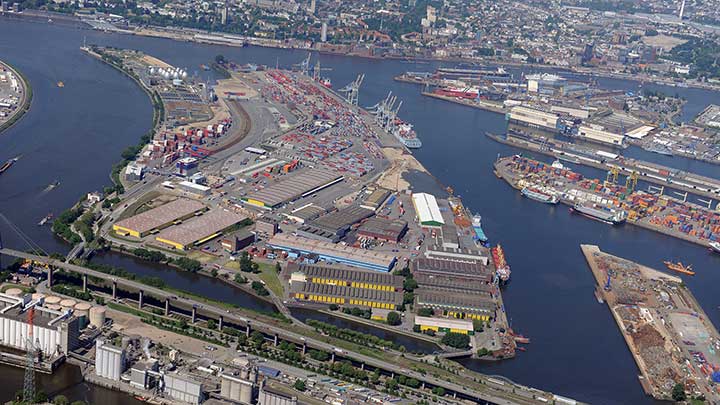
Accreditation
The professional performance of our work is subject to continuous review by the German Accreditation Body (Deutsche Akkreditierungsstelle GmbH; DAkkS).
Our testing laboratory has been accredited since 1993 in accordance with DIN EN ISO/IEC 17025, which includes the following areas:
- Mechanical and technological tests
- Metallography
- Analytical spectrometry
- Non-destructive tests
- Hardness tests
Our services at a glance
Destructive tests
- Tensile tests
- Pressure tests
- Notched bar impact tests
- Hardness tests
- Bending tests
- Drift-expanding tests
- Ring flattening tests
- Ring tensile tests
- Ring deformation test
Non-destructive tests
- Visual inspection
- Magnetic particle tests
- Penetrant tests
- Spectral analysis
We offer the following services for your support in the analysis of damage incidents:
- Metallography
- Scanning electron microscope
- Damage examinations
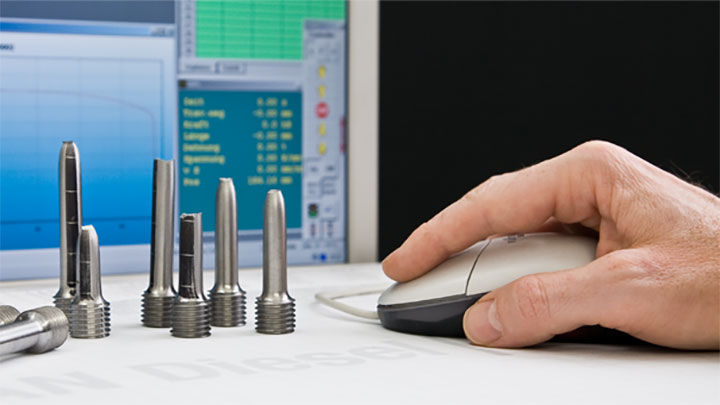
Overview
- We understand completely that you want to know the results of materials tests as soon as possible, so we provide a meaningful test result after three to four days for subsequent tests. Test results can even be delivered within 24 hours in urgent cases.
- The contact to our customers is very important to us, which is why every single test request is personally handed by one of our employees. Everything — from the first test to the final test report — remains the responsibility of a single person. Moreover, you can reach us by telephone at any time on work days. Our services include in-house sample production, initial sample testing, and on-site assessments.
- Possible on-site examinations include surface analysis (microscopy and replicas), hardness testing, and roughness measurements. Additional examinations for welder tests and welding procedure tests in accordance with DIN EN ISO and the Pressure Equipment Directive are also possible.
- We prepare metallographic sections for you and examine the microstructure for purity and grain size. We inspect the development of corrosion damage in a corrosion test, also known as a rust inspection or rust test. Whenever cracks or fractures have appeared, we determine their causes and origin. Our welding work and procedure qualification testing is based on our extensive experience.
Services
Mechanical – technological tests
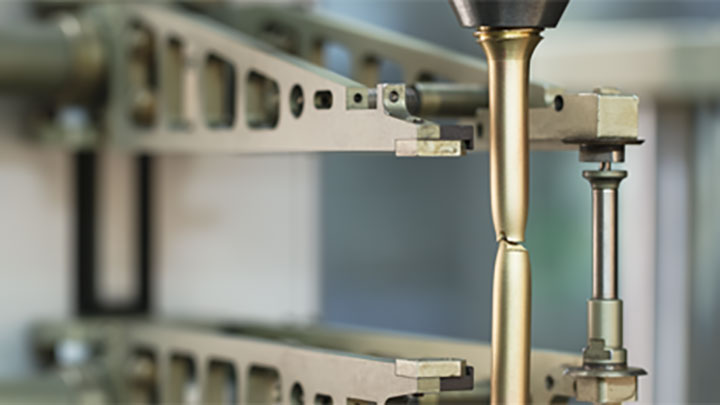
Destructive material testing is used for the determination of material characteristics or material parameters. Various methods are used during performance of the materials tests. The required characteristic values are based on current standards unless otherwise specifically agreed with the customer.
Materials tests play an important role during investigations of damage incidents and the assessment of the causes of damage. Our materials testing laboratory (accredited according to DIN EN ISO/IEC 17025) offers you the opportunity to test your workpieces in tensile tests, notched bar impact tests, bending tests, and hardness tests according to Brinell, Rockwell, Vickers.
Tensile strength, yield strength, and elongation at break are determined using standardized tensile samples. Tensile tests are also used to assess the maximum force to fracture (breaking strength) during component tests for chains, pipes, stair treads, etc. The same test equipment can be used to test foams, sandwich elements, and other materials for compressive strength.
The notched bar impact test is used to determine the toughness of materials when subjected to impact forces and under existing notch effects. A notched test specimen is shattered by a swinging pendulum and the toughness of the material is measured. If requested, the lateral expansion and the crystalline proportion of breakage can be measured along with the notched bar impact work. This test can be performed according to ISO specifications.
During the bending test, the deformation capacity of a material and whether damage occurs to the component at a certain bending angle are assessed. This test is used during procedure tests to detect a lack of fusion in some processes.
Hardness tests
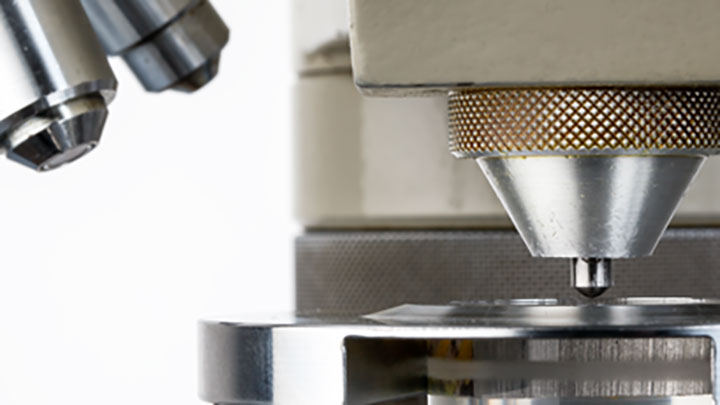
Determining the hardness of a material is a way to measure its resistance to penetration by other, harder workpieces.
The hardness can be determined by various means:
- Standard test methods (Brinell, Rockwell, Vickers)
Hardness testing of welding seams and their heat-affected zones reveals information about the welding process and is a component of procedure tests.
The material undergoes a thorough structural transformation during processes such as heat treatment and surface hardening. Hardness testing can play an especially decisive role in such cases.
Analytical spectrometry
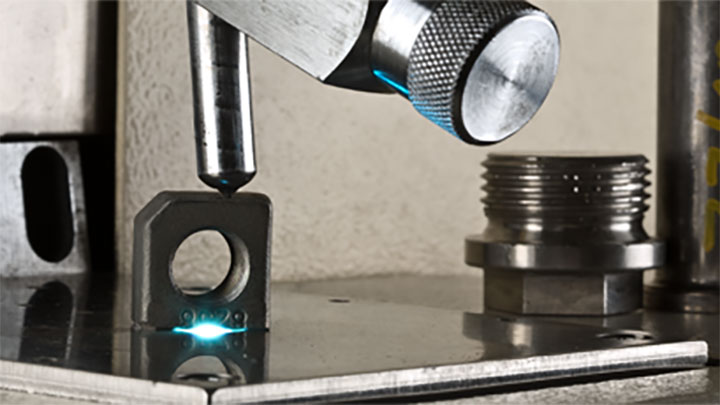
Optical emission spectrometry for the determination of the chemical composition of Fe-, Al-, Ni-, and Cu-based materials.
During the performance of subsequent materials tests, we utilize optical emission spectrometry (OES) to cross-check the melt analysis. By simultaneously measuring as many as 30 elements, we are able to analyze accurately the chemical composition of iron (Fe)-, aluminum (Al)-, nickel (Ni)-, and copper (Cu)-based materials.
Metallography
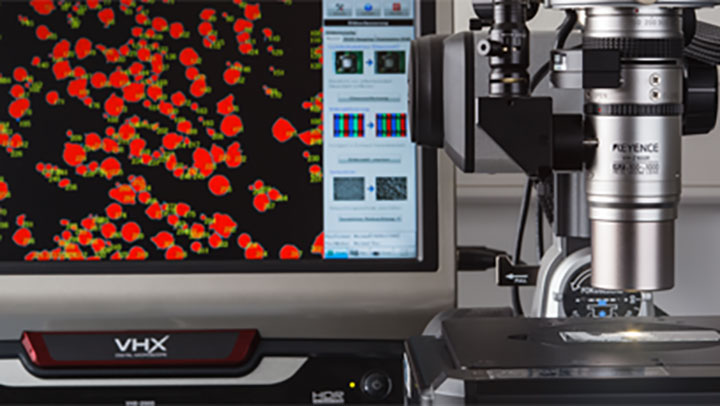
- Metallographic microsection preparation
- Stereo microscopy and reflected light microscopy
- Microstructure evaluation
- Determination of degree of purity
- Grain size determination
- Replica evaluation
Metallography is the process used to determine the microstructure and structure of materials. Defects in melting, manufacturing, and work processes can alter material properties to such an extent that damage can occur during operation. Microscopic determination of the degree of purity and grain size and structural evaluation (macrostructural section/microstructural section) provide information about the service and production properties of a material. The analysis of replicas permits the non-destructive analysis of component surfaces.
Scanning electron microscope
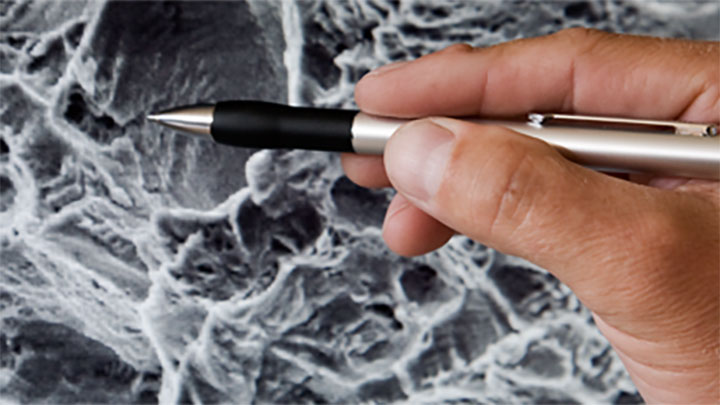
- Fractured surface examination and cause clarification
- Display of detailed surface structures
- Microanalysis, detection of trace elements
Scanning electron microscopy images smooth and rough surfaces with great depth of field and high resolution and is a part of the investigation of the occurrence of damage. Typical uses are examinations of fractured surfaces (fractography), assessment of surfaces, coatings, wear, thickness determination on coatings, structure characterization, determination of crystal orientations, or examination of homogeneity. We use EDX analysis (energy-dispersive X-ray analysis) for coating examination, e.g., to determine the composition of corrosion residues or oxide layers.
Practice-oriented damage analysis
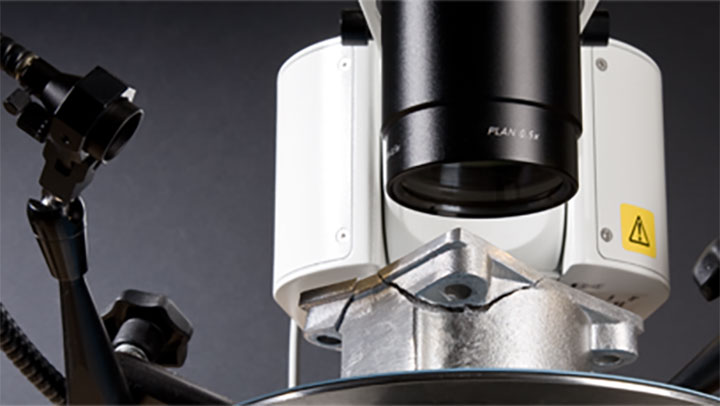
When damage has occurred, the damage analysis establishes correlations between the damage and possible influencing factors. Using the information obtained in the practice assessment, we can perform a fracture assessment and determine the possible cause of any damage or can answer questions about measures for preventing future damage.
The target-oriented examination and evaluation of corrosion images (also known as rust examination) helps to understand the origin and spread of corrosion damage (rust damage) and to make any necessary recommendations.
We support you in the development of welding, spraying, and galvanic manufacturing processes. Samples are examined and evaluated metallographically according to previously defined criteria (pore size, crack length, pore frequency, etc.).
Non-destructive tests
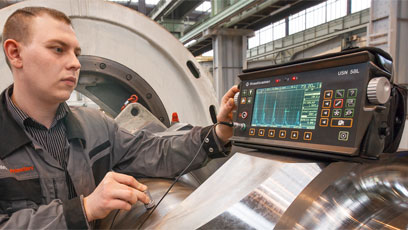
- Penetrant testing and magnetic particle tests for the detection of surface defects
We offer non-destructive tests as part of welding, work, and process tests as well as general materials examinations. Our Level-2 certified inspectors perform visual inspections, penetrant inspections, and magnetic particle inspections on your components for evidence of material defects.
Measurement technology
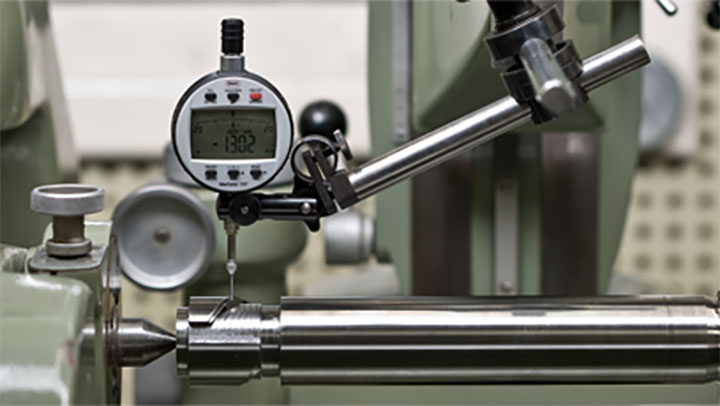
We use our measurement technology as support of our production examinations, at which times we measure length, shape, and position tolerances and roughness.
From the test to the test report, everything supervised by a single person.
Downloads
Adress and local contacts
MAN Energy Solutions SE
PrimeServ HamburgRossweg 6
20457 Hamburg
Phone: +49 40 7409-0
Fax: +49 40 7409-104
E-Mail: PrimeServ-HAM@man-es.com
Nikolai Gross
Head of Laboratory
PrimeServ HamburgRossweg 620457 Hamburg
Nikolai.Gross@man-es.com t +49 40 7409-335Johann Surajew
International Welding Technician IWT
PrimeServ HamburgRossweg 620457 Hamburg
Johann.Surajew@man-es.com t +49 40 7409-311Sönke Pelz
Material tester
PrimeServ HamburgRossweg 620457 Hamburg
Soenke.Pelz@man-es.com t +49 40 7409-209MAN Energy Solutions is now Everllence.
We have adopted a new brand name and moved to a new domain: www.everllence.com. This page will also be relocated there shortly. We are working on shifting all pages to www.everllence.com.
